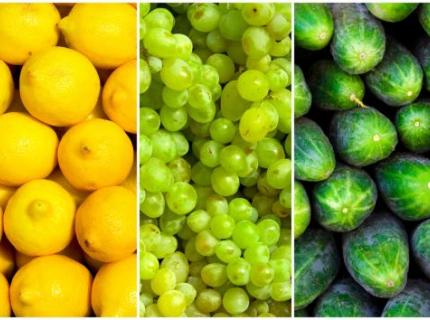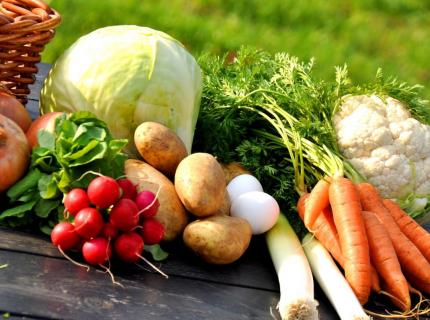









Areas of Work
Origin and authenticiy of food
Over the past years the determination of isotope contents for the verification of the origin and authenticity of food and food additives has grown significantly.
Applying isotop methods in the food analysis can provide information about:
geographic origin of food
authenticity of food and food additives (not declared additives or verification of naturalness)
compliance with the legal regulations or agreement by treaty
The isotope analysis is the most effective and in many cases the only method to prove food fraud.
Generaly, isotope methods can be applied for all sorts of food. Typical products that are regularly investigated by isotope methods are:
- wine, spirits, sparkling wine
- juice, fruit, vegetables, fruit products
- honey
- milk and milk products
- flavouring and natural additives
Due to Hydroisotop's long-term activity in the field of authenticity proof we have built a great data pool which is available for any kind of comparison.
We conduct all isotope measurements according to standard methods. We also provide consulting and advice beyond the scope of the issue.
Isotope methods are suitable to determine the origin and the authenticity of alcoholic beverages.
The isotope content can provide the following information:
for wines
- addition of sugar
- watering
- geographic origin
- botanical origin of the alcohol
- age
for spirits
- age
- parental material of the ethanol
for sparkling wines
- origin of the CO2
The 2H-NMR method is applied to detect the addition of sugar from C3-plants (cane sugar). In case of C4 plants is preferred to analyse the δ13C value since this allows the detection of even very small amounts of sugar admixture. The verification of sugar mixtures from both C3 and C4 plants requires a combination of the δ13C and the 2H-NMR detection methods.
Watering of wines is typically analysed by the oxygen isotope ratio of the fluid.
Isotopes of oxygen, hydrogen, and carbon are used to verify the geographic origin of wine. The detection results will be compared to databank entries corresponding to the supposed geographic origin. If a match is questionable an additional analyses of the strontum isotope ratio is recommended.
Age determination of wine or spirit can be done by analysing the radioactive tritium (3H), carbon-14 (14C), or other nuclides released from nuclear bomb tests or power plants.
The parental materials of ethanol especially in spirits are identified by the 13C contents or the 2H-NMR values of the ethanol. Synthetically produced ethanol is only identified through the 14C content, though.
The differentiation between CO2 derived from fermation or from other origin in sparkling wines happens via δ13C and 14C content analysis of the CO2.
The distribution of the stable isotopes of the elements carbon, hydrogen, and oxygen in fruits, vegetables, and juices made from fruits and vegetables as well as other fruit products is a valuable tool for the verification of their origin and pretreatment.
- Control of regional origin
The claimed origin of food can be verified by using multi-element-isotope analyses of carbon, nitrogen, oxygen, and strontium:
- allocation of asparagus to defined growing area
- allocation of apples to defined growing area
- Proof of sugar addition in juices from citrus fruits, apple, and pineapples
The determination of carbon isotopes allows the verification of:
- the addition of C4 sugar (e.g. cane sugar)
- the addition of C3 sugar (e.g. beet sugar)
- Proof of water addition
Watering of juices can be recognized by the oxygen and hydrogen isotope signatures. This way a differentation between a organic juice and a re-watered juice from concentrate is possible.
- Proof of acidification
Additional acidification is detectable by analysing carbon isotopes:
- addition of citric acid to juices from citrus fruits, pineapple, and currants
- addition of L-apple acid to juices from apples and saur cherry
- addition of L-ascorbin acid to juices from citrus fruits, pineapple, and currants
- Authenticity
The isotope analysis can detect fraud of honey.
Frequent frauds are:
- declaration of origin
- sort of honey
- addition of fruit syrups
Whereas a common pollen analysis can be used to verify the origin only the determination of the carbon isotopes of sugar and proteins are suitable to detect fraud.
- Addition of sugar
Analysing the carbon isotope ratios of sugar and the protein fractions in the honey allows to detect and quantify the addition of sugar from C4 plants (corn, cane).
The sugar and the proteins in honey are supposed to come from the same resource. Where ever the bees collect their food from (orange blossons, acaciae, or other blossoms), the relation between the carbon isotope ratios of the proteins and the sugar is always constant. Should there be an addition of cane or corn sugar to the honey the isotope ratio of the sugar will change. However, the isotope ratio of the proteins will not.
In order to explicitly verify the origin of milk and milk products the determination of isotopes of several elements (C, H, O, S, Sr) is required.
The following evaluations concerning milk and milk products, especially butter are posssible:
- determination of regional origin
- differentiation between summer and winter production of milk and butter
Natural flavourings and natural-identical or synthetic flavourings can be distinguished by isotope methods. Also the verification of the fermantative production is possible.
So far the following substances have been investigated:
- vanillin
- bitter almond oil
- fruit flavourings, especially aliphatic esters



